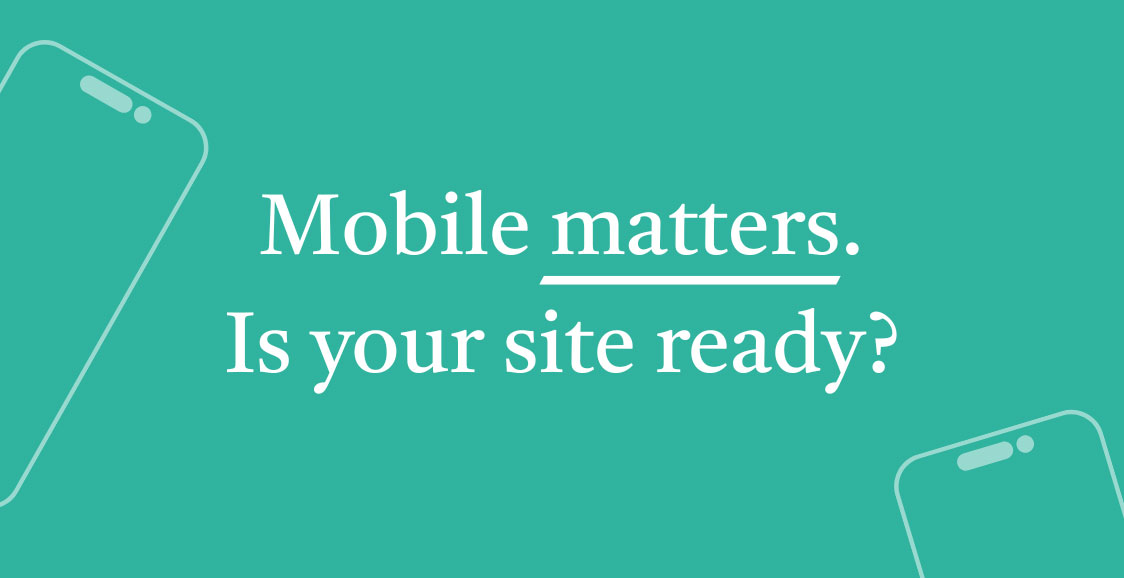51% of jobseekers use their smartphones to search for new job opportunities.
Why this is so important?
Long, complicated application forms are annoying on any device, but feel particularly potent on mobile devices. So much so, PageUp research shows that 31% of applications started on a mobile device were abandoned in 2023, compared to 15% on a desktop.
In saying that, research also revealed that an impressive 33% of applications were submitted via a mobile device. When we consider how many jobseekers abandoned their mobile applications, yet still a third of all applicants used a mobile device to apply, we can see a lot of opportunity was left on the table (…or device).
Much of this can be attributed to bad mobile experiences.
Is it really that important?
Yes! Who here has lost progress on a mobile website form after clicking the wrong button? Most of us– and we’ll never get those minutes back. It’s discouraging. So much so, that you may not have filled out that form again. Couple this with unresponsive design, slow loading times, and shoddy navigation– well, you have a problem!
A mobile-friendly career site is a testament to a company’s commitment to user-centric experiences, it’s not just about shrinking content or making buttons bigger. There are many benefits to taking it seriously, but let’s take a very brief look at why.
Why mobile-friendly sites are important for jobseekers:
- It makes the process easy: Jobseekers desire efficiency and clarity. Navigation should be intuitive, with a clear path to application. This is just as important for mobile as it is for desktop because of the high standard set by mobile applications.
- Speed is a priority: Jobseekers demand quick-loading pages. There is little patience for anything short of ‘fast’ anymore because that’s what people are conditioned to.
- It’s inclusive: A mobile-friendly site is a necessity for many– particularly jobseekers who rely on mobile devices for internet access.
How to create a mobile-friendly career site
1. Strengthen your mobile career site
Use adaptive layouts: Adaptive layouts automatically resize content to fit any screen (i.e. a computer, phone, or tablet) Many web-building tools and SaaS solutions come with pre-existing adaptive layout options, but manually checking your career site is actually adjusting to those different sizes is important. By taking conscious time out to look and test your functionality on a variety of devices (and browsers), you’ll gain insight into what screens your career site is working on and which ones it isn’t.
Ensure a touch-friendly interface: Buttons and links must be very clear and easy to navigate using touch. They should be adequately spaced and large enough to be tapped without frustration, speeding up the time and positively affecting the candidate experience. Nothing breaks immersion for a potential candidate more than having to frequently pinch-zoom into a small element just to click it!
OptimiseOptimize your content for speed: Large images and videos can drastically slow down your career site on a mobile. Compressing them into smaller files that retain their quality can decide how fast your site loads. For a detailed guide on how to compress, take a peek at this great resource. Additionally, you speed up your career site by decreasing the number of elements that need to be loaded– such as scripts and CSS files– as well as implementing browser caching. Browser caching helps by storing some data on the visitor’s device, so it doesn’t need to be reloaded with each visit.
Use clear calls-to-action: Always use distinct and persuasive CTAs that guide users to apply, learn more, or get in touch. CTAs like ‘apply now’ are arguably the most important career site element for a jobseeker, and definitely the most important for recruitment teams, so it’s pivotal these are as clear as daylight and strategically positioned.
Streamline your menus: Avoid cluttered menus! Desktop/laptop career sites have the luxury of space. They can be more complex because fancy UI design can make complex taxonomies look and feel simple. Mobile? Not so much. Always opt for a simple, intuitive navigation structure that makes it easy for jobseekers to find what they’re looking for. You may have to sacrifice some of your impressive website homepage UI, but mobile is all about efficiency, clarity, and speed.
2. Improve search functionality for mobile
Streamline your search filters: You want jobseekers to quickly find positions. Focusing on the most important filters like job category, location, and employment type is the first step as these are typically the primary criteria. An ‘apply filters’ button will help jobseekers refine their search before seeing results, while a ‘clear (or) reset filter’ will give the user the option to start over. You can further improve their experience by using dropdown menus for filters, so jobseekers don’t need to type it out.
Have a clear job search CTA: An obvious and compelling CTA is a key part of prompting somebody to search for a job. Placing a “Search Jobs” button at the top of the mobile page will make it easily visible without scrolling. Some companies prefer more active copy like “Search Now” or “Explore Jobs” to get attention, but whatever works for you. Make sure you use a contrasting colour for your CTA button, so it stands out against the background.
OptimiseOptimize your job ads for mobile: By displaying high-level job information first (job title, location, and application deadlines) you’ll provide clarity to the jobseeker and speed up a potential application. For the gritty details, you can use expandable or collapsible sections on job descriptions, responsibilities, and requirements.
3. Tailor a mobile-friendly application process
Simplified application process: Keeping forms short and asking only for essential information will give you the best chance of turning a jobseeker into an applicant. Glassdoor revealed cutting down the time needed to complete a job application by 10% percent led to a 2.3% percent increase in mobile job applications. Other factors, like too many buttons and fields, tightly spaced together, can also ruin the user experience and prevent an application from being completed.
Save and return functionality: A great way to safeguard an application, particularly for the busy or easily distracted mobile user, is allowing them to save their progress and return to complete the application at a later time. Many jobseekers will research a role or begin an application on mobile, but prefer to complete it on desktop. Ensuring users can save their progress is helpful to both the user and the recruitment team. You may not receive the application immediately, but you’ve afforded yourself a chance at receiving it later. This functionality may very well land you your best applicant and potential hire.
Resume upload options: One of the easiest ways to create a positive candidate experience is by providing multiple methods to upload a resume. Integrations with LinkedIn, SEEK, and allowing for file uploads are common practices nowadays. That’s for good reason: auto-filling resumes is easy and saves a lot of time!
What should I do now?
Above all else, catering to the modern jobseeker is key. Jobseekers expect an experience as simple as what they have come to expect from their apps. This shift in mindset isn’t changing anytime soon. Likely, the demand for mobile-friendly websites will only increase. Having a career site that is mobile-friendly requires a proactive response, but will lead to a rewarding uptick in applications and brand recognition.
We can help you with that. PageUp’s powerful recruitment marketing software, Clinch, can help you build a mobile career site that recruits for you. But don’t just take our word for it – request a free demo of PageUp Clinch to see the career site capabilities in action or learn more here.





